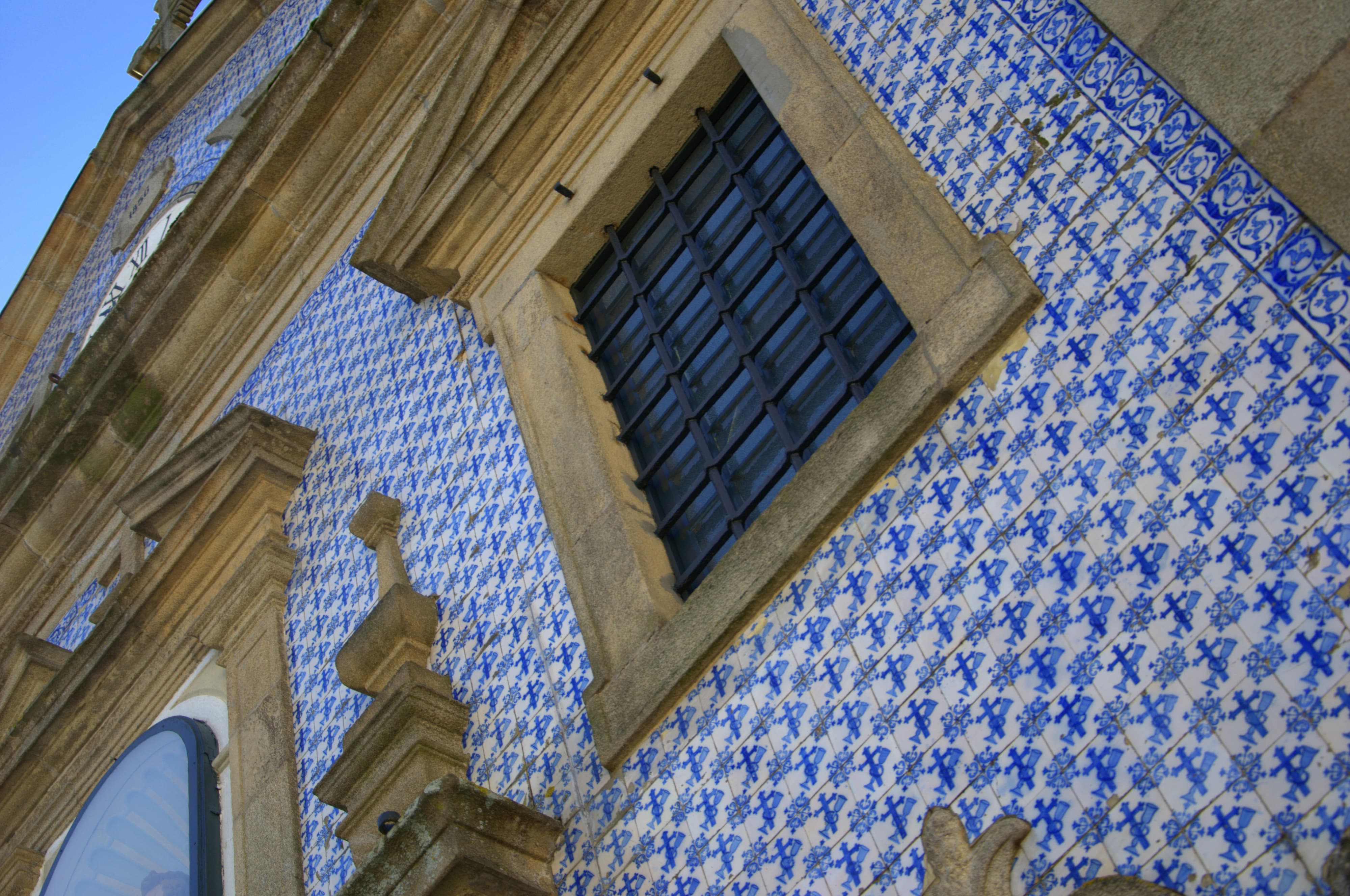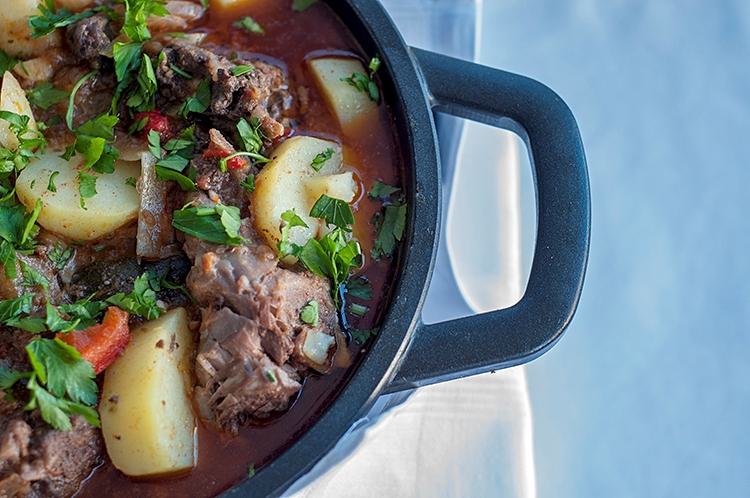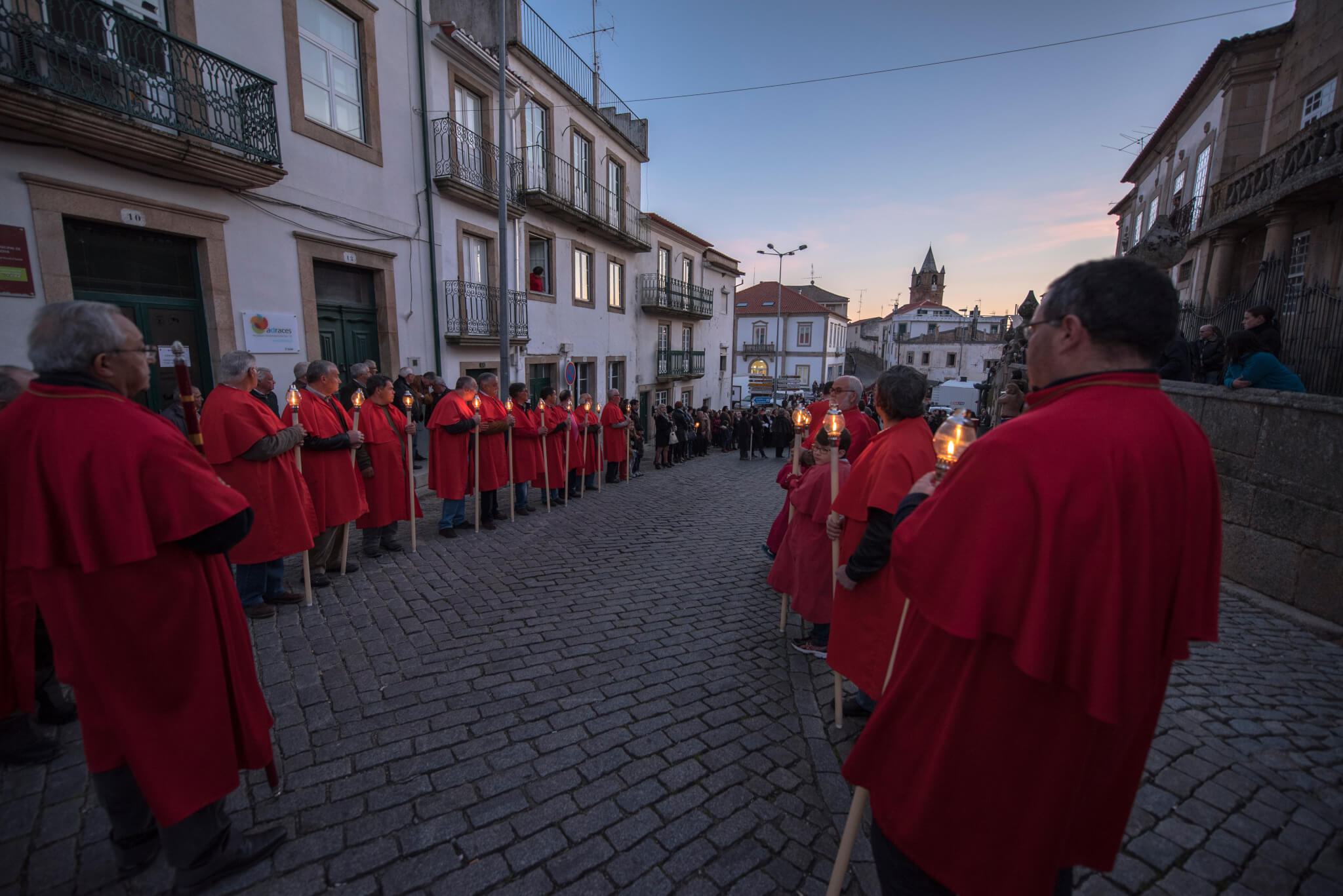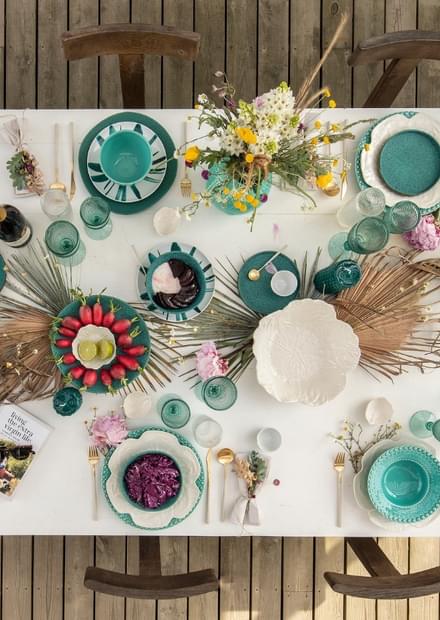Ovar
The city of Ovar, near Aveiro, known for its rich religious heritage and artistic quality, has celebrated the liturgical calendar, particularly Lent, with great devotion for centuries.
In the city historic center, Lenten traditions and devotions have contributed to a unique cultural legacy, especially through annual Lenten processions, the highlight of these religious celebrations.
Ash Wednesday marks the beginning of Lent, symbolising reflection on life's brevity and encouraging spiritual renewal.
The Chapels of the Passion in Ovar
Originally wooden structures, the Passion Chapels were rebuilt between 1748 and 1756 using stone and lime, funded by a tax on wine sales. Today, these seven 18th-century Rococo chapels form a unique architectural and artistic ensemble in Portugal, depicting scenes from Christ's Passion with intricate designs blending architecture, mural painting, sculpture, and altarpieces.
The chapels are located throughout the historic center:
- Pretorium Chapel (inside the Main Church)
- The Fall Chapel (Rua Alexandre Herculano)
- The Encounter Chapel (Rua Alexandre Herculano)
- The Cyrenean Chapel (Rua Cândido dos Reis)
- Veronica's Chapel (Praça da República)
- The Daughters of Jerusalem Chapel (Largo Mouzinho de Albuquerque)
- Calvary Chapel (Largo dos Combatentes)
Lenten Processions
Ovar hosts several significant Lenten processions:
- Procession of the Third Order (Ash Procession) – This procession is organised by the Third Order of St. Francis and the Parish of St. Christopher and it departs from the Main Church of Ovar. March 16 at 3:00 PM.
- Procession of the Translation of Our Lady of Sorrows – This procession translates the image of Our Lady of Sorrows from the Calvary Chapel to St. Anthony's Chapel along the 14 Stations of the Cross. March 29 at 9:00 PM.
- Procession of the Passion – This procession follows Christ's journey from the Pretorium to Calvary, including the emotional Sermon of the Encounter between Jesus and Mary. March 30 at 3:00 PM.
- Ecce-Homo Procession – Also called the "Procession of the Torches", this procession features three 18th-century images (Crucifixion, Christ with the Green Cane, and Christ Bound to the Column) carried in silence, stopping at the Passion Chapels. April 17 (Holy Thursday) at 9:00 PM.
- Way of the Cross Procession – Oganised by the Secular Franciscan Order, this procession visits 14 crosses in the city center. April 18 (Good Friday) at 7:00 AM.
- Burial Procession of Christ – Organised by the Brotherhood of Christ’s Passion. It features two moments: Christ in the Sepulchre and Our Lady of Solitude, reenacting Christ’s Passion and returning to Calvary. April 18 (Good Friday) at 8:00 PM.
Lenten celebrations in Ovar offer a remarkable blend of tradition, devotion, and artistic heritage, making it a unique cultural and religious experience.
Fundão
The cycle of Lent and Holy Week traditions in Fundão, nearby Serra da Estrela, remain a central event in the Christian liturgical year.
During Lent—starting on Ash Wednesday and leading up to Palm Sunday and Holy Week—many villages in Fundão continue age-old traditions such as "Encomendações das Almas", "Cânticos dos Martírios", and "Ladainhas", devout songs of prayer and meditation that break the silence of the night. Some are sung by men, others by women, preserving a deep-rooted spiritual heritage.
In Lavacolhos, the unique "Procession of the Penitents" echoes ancient pagan rituals, while on Good Friday night, the "Burial Procession of Christ" is marked by the mournful cries of four women known as the Verónicas.
On Holy Thursday, also in Fundão, the Procession of the Lord of the Green Cane will once again leave from the Chapel of Mercy and silence will once again be present in all seven hermitages in the city of Fundão during the Passion of Christ.
On the Saturday night before Easter, the "Festa da Aleluia" takes place, with all the church bells in Fundão ringing in unison to celebrate Christ’s Resurrection and the arrival of spring.
Easter traditions also extend to family gatherings, where tables are filled with sweet cakes, olive oil cakes, roasted lamb or goat with garlic and rosemary, corn porridge ("papas de carolo"), and the beloved sweet rice pudding.
Idanha-a-Nova
In Idanha-a-Nova, in the region of Castelo Branco, Easter traditions are deeply rooted and gloriously celebrated.
On Good Friday night, the Burial Procession of Christ takes place, led by the Brothers of the Santa Casa da Misericórdia. Carrying the image of Christ, they proceed to the Chapel of São Jacinto, decorated with branches of laurel, calla lilies, sour oranges and other plants, where the image of Christ is placed in a wooden chest serving as a tomb. The solemn silence is dramatically broken by the striking of the chest’s lid, symbolising the stone sealing Jesus’ burial site.
On Holy Saturday, the tradition of singing "Alvíssaras" is widespread, accompanied by tambourines and hand drums. However, in Idanha-a-Nova, hundreds gather at night in the church square, blowing thousands of whistles to mark the Easter Vigil Mass. At the end, people eagerly await the priest to throw almonds into the crowd, a cherished local custom.
In Segura, a tiny village located 34 minutes away from Idanha-a-Nova, a special dish is prepared for the Easter meal: a sorrel purée served with fried river fish. The use of sour herbs is a symbolic reference to the Exodus story, reminiscent of the bitter herbs eaten by the Jews on the night before their liberation from Egypt.
Lenten processions in Idanha-a-Nova
Procession of the Steps - 6th April 2025, 19h
Seeing Our Lord - 11 April 2025, from 18h to 20h
Preparation of the Holy Sepulchre in the Chapel of São Jacinto of the Mother Church by the Brothers of the Blessed Sacrament - 18th April 2025, 8h
Procession of the Burial of the Lord and Sermon - 18th April 2025, 18h30
Mass with appearance of the Alleluia and procession through the streets of the town. Alleluias to the sound of the tamborines ("adufes"). Almond picking at the parish priest's door - 19th April at 21h
Ordering of Souls in the Historical Village Monsanto
This is a religious practice that takes place on the Fridays of Lent, when women and men climb to the highest points of the village to chant and pray for the souls in purgatory.
"Encomendação das Almas" (Ordering of Souls) is the name given to a ritual associated with the cult of the dead practised by women during Lent and whose origins are thought to date back to the 10th century. The purpose of Encomendação das Almas is to help lighten the punishment of souls in Purgatory (‘Pregatório’, according to local colloquialisms) through prayers, so that they can reach perpetual rest. This ritual is usually carried out by women ‘encomendadoras’, who gather at strategic points during the night and, by chanting and praying, call on the rest of the community to wake up and accompany them.
This manifestation derives from the fusion of pagan and Christian rituals preserved over the centuries by popular culture. The wearing of black robes is in keeping with the mourning, compunction and gravity of the Lenten season.





















